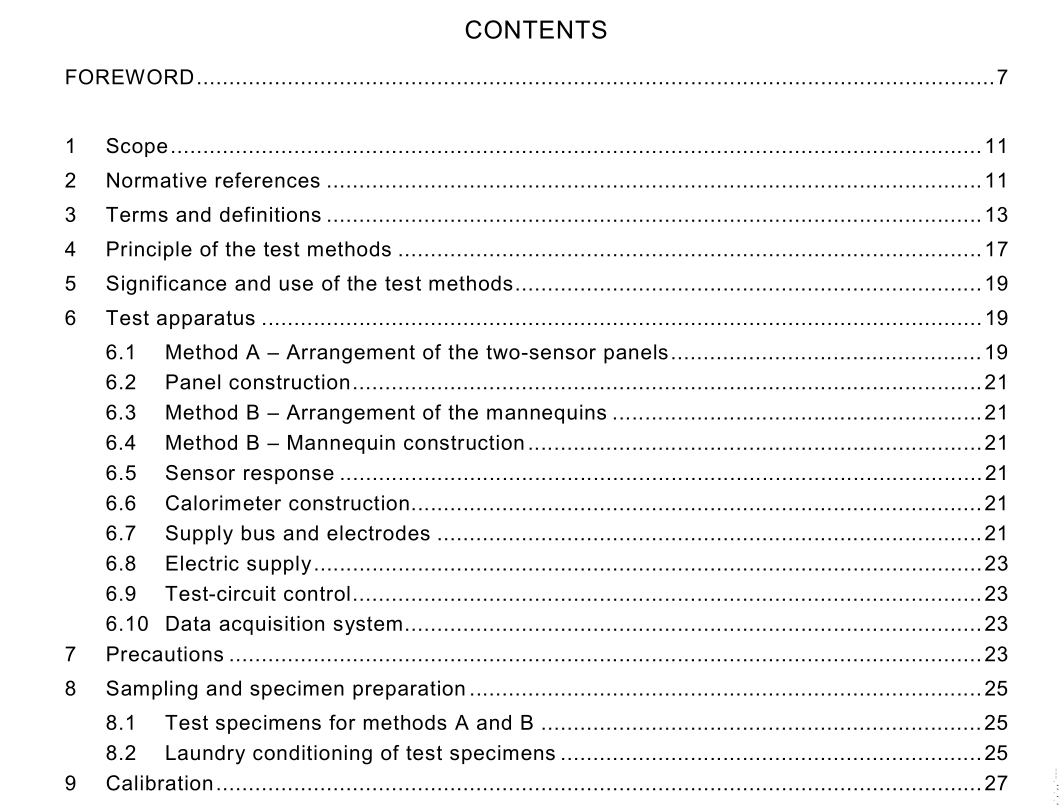IEC 61482-1 pdf download

IEC 61482-1 pdf download.Live working – Flame-resitant materials for clothing for thermal protection of workers – Thermal hazards of an electric arc
1 Scope
This part of IEC 61482 specifies test methods to measure the arc thermal performance value of materials intended for use in heat- and flame-resistant clothing for workers exposed to electric arcs. These test methods measure the arc thermal performance value of materials which meet the following requirements: less than 100 mm char length and less than 2 s afterflame after removal from flame, when tested in accordance with ISO 15025, procedure B (bottom-edge ignition) on the outer material, and the char length measured using a modified ISO method as described in annex A. These methods are used to measure and describe the properties of materials, products, assemblies or garments in response to convective and radiant energy generated by an electric arc in open air under controlled laboratory conditions. The materials used in these methods are in the form of flat specimens for method A and shirts for method B. Method A is used to measure fabric response to arc exposure when tested in a flat configuration. Method B is used to measure clothing response to an arc exposure including all the garment findings, sewing thread, fastenings, fabrics and other accessories when tested on a mannequin torso. It is the responsibility of the user of this part of IEC 61482 to establish appropriate safety and health practices prior to use. For specific precautions, see clause 7. NOTE An alternative test method is under development to measure the same properties using a constrained and directed arc. This method will be added to this part of IEC 61482 when the equivalence to method A has been demonstrated.
3 Terms and definitions
For the purpose of this part of IEC 61482, the following definitions apply. 3.1 arc duration time duration of the arc, in s 3.2 arc energy, vidt sum of the instantaneous arc voltage values multiplied by the instantaneous arc current values multiplied by the incremental time values during the arc, in J or kW·s 3.3 arc gap distance between the arc electrodes, in mm 3.4 arc thermal performance value (ATPV) in arc testing, incident energy on a fabric or material that results in sufficient heat transfer through the fabric or material to cause the onset of a second-degree burn based on the Stoll curve, in kW·s/m 2 3.5 arc voltage voltage across the arc, V 3.6 asymmetrical arc current total arc current produced during closure; it includes a direct component and a symmetrical component, A 3.7 breakopen in electric arc testing, material response evidenced by the formation of one or more holes in the material which may allow flame to pass through the material NOTE The specimen is considered to exhibit breakopen when any hole is at least 300 mm 2 in area or at least 25 mm in any dimension. A single thread across the opening or hole does not reduce the size of the hole for the purposes of this part of IEC 61482. 3.8 breakopen threshold energy, E BT highest incident energy exposure value on a fabric or material below the Stoll curve where the specimens do not exhibit breakopen, in kW·s/m 2 3.9 charring formation of carbonaceous residue as the result of pyrolysis or incomplete combustion 3.10 closure point on supply current waveform where the arc is initiated 3.11 delta peak temperature difference between the maximum temperature and the initial temperature of the sensor during the test, in °C 3.12 dripping in testing flame-resistant clothing, material response evidenced by flowing of the fibre polymer 3.13 embrittlement formation of a brittle residue as the result of pyrolysis or incomplete combustion 3.14 heat attenuation factor (HAF) in electric arc testing, per cent of the incident energy which is blocked by a material at an incident energy level equal to ATPV 3.15 heat flux thermal intensity indicated by the amount of energy transmitted per unit area and time, in kW/m 2 3.16 ignitability (ignitable) in electric arc exposure, property of a material involving ignition accompanied by heat and light, and continued burning resulting in consumption of at least 25 % of the exposed area of the test specimen 3.17 ignition initiation of combustion 3.18 monitoring sensors sensors mounted on each side of the panel or mannequin, using the calorimeters described in 6.6, not covered by fabric and used to measure incident energy 3.19 incident energy, E i in electric arc testing, heat energy received at a unit surface area as a direct result of an electric arc, in kW·s/m 2 NOTE In an arc test, incident energy for a specimen is determined from the average temperature-rise response of the two monitor sensors adjacent to the test specimen.









